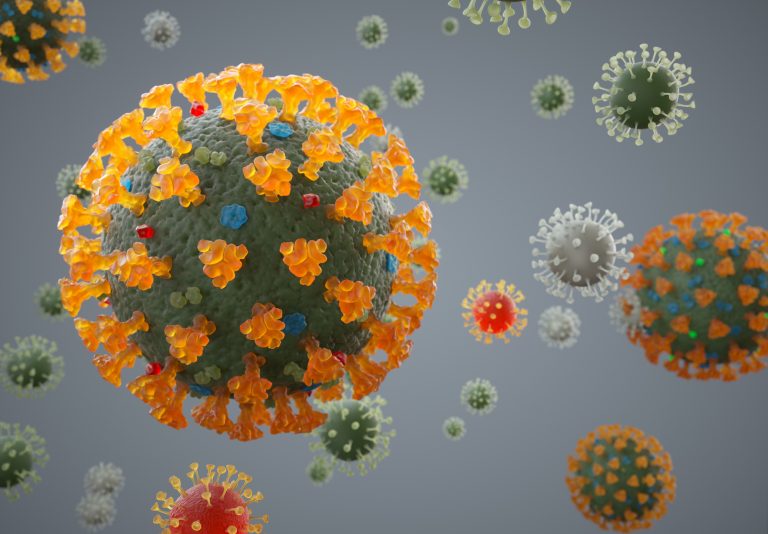
Scientists at Duke University have developed a quick and easy-to-deploy serological test that can detect neutralizing antibodies (nAbs) that block the interaction between the human receptor protein (angiotensin-converting enzyme 2, ACE2) and the spike protein of wild-type SARS-CoV-2 including three variants of concern (VOCs): B.1.1.7, B.1.351, and P.1. The scientists have also adapted the platform to detect nAbs against an additional variant (B.1.617.2, Delta variant). The researchers call the new test the COVID-19 Variant Spike-ACE2-Competitive Antibody Neutralization assay (CoVariant-SCAN).
The test, whose development was reported in Science Advances, could potentially inform clinicians on which synthetic monoclonal antibody to use in treatments for the best outcome.
Tests to detect anti–SARS-CoV-2 antibodies are important in assessing natural and vaccine-induced immunity in patients and for epidemiological surveillance. While several serological tests are currently available, with the emergence of more transmissible and virulent VOCs there is an urgent need for a test that can measure nAbs against all VOCs simultaneously in a quick and simple test that does not need viruses, cell culture, or high-level biosafety containment facilities.
Ashutosh Chilkoti, PhD, professor and chair of biomedical engineering at Duke University and senior author of the paper says, “While developing a point-of-care test for COVID-19 antibodies and biomarkers, we realized there could be some benefit to being able to detect the ability of antibodies to neutralize specific variants, so we built a test around that idea. It only took us a week or two to incorporate the Delta variant in our test, and it could easily be expanded to also include the Omicron variant. All we need is the spike protein of this variant, which many groups across the world—including our group at Duke—are feverishly working to produce.”
Cameron Wolfe, associate professor of medicine at the Duke University School of Medicine and a co-author of the paper says, “We currently really have no rapid way of assessing variants, neither their presence in an individual, nor the ability of antibodies we possess to make a difference. It’s one of the lingering fears that as we successfully vaccinate more and more people, a variant may emerge that more radically evades vaccine-induced antibody neutralization. And if that fear came true—if Omicron turned out to be a worst-case scenario—how would we know quickly enough?”
“There are several translational scenarios where we think this test could be useful,” says Jacob Heggestad, PhD, lead author of the paper and a graduate student in Chilkoti’s lab. “First, it could be deployed as an epidemiological tool to assess the efficacy of vaccines against circulating or emerging variants in specific regions. Second, it could be used at the bedside to test patients presenting with acute COVID-19 who are either known to have been or likely are infected by a VOC. Patients with low neutralizing activity could be treated immediately with the Regeneron cocktail or a similar mAb therapy to reduce the likelihood of severe infection. Third, this test could also be used to rapidly screen mAb therapeutics and assess their effectiveness against each variant.”
Heggestad adds, “While larger studies are needed to confirm the clinical significance of our results, we believe that the translational significance lies in the fact that CoVariant-SCAN is very easy to use and can be conducted rapidly, ideally at the point-of-care.”
The test uses a non-stick polymer brush coating that stops anything but the desired biomarkers from attaching to a wet test slide. The effectiveness of this non-stick shield allows the detection of low level targets. Printing different molecular traps on different areas of the slide enables researchers to detect multiple biomarkers at once. Fluorescent human ACE2 receptors and viral spike proteins are printed on a slide. During the test, ACE2 proteins detach from the slide and are caught by the spike proteins still attached to the slide, causing the slide to glow. But in the presence of nAbs, the spike proteins cannot grab on to the ACE2 proteins, making the slide glow less, indicating the effectiveness of the nAbs.
“The CoVariant-SCAN builds off our extensive body of previous work,” says Heggestad. “First, the non-fouling surface coating (POEGMA) allows us to directly test complex biological samples without sample dilution. This coating leads to high signal-to-noise ratios by suppressing background noise which results in higher sensitivity. We use a simple and scalable fabrication method for functionalizing our surface—using inkjet printing—without the need for covalent chemistry. The assay itself is novel. We can measure neutralizing antibodies, or those that block the ACE2-Spike interaction, against several variants of concern simultaneously from a single sample. Moreover, we only need to measure the fluorescent output of a single fluorophore which greatly simplifies the readout step, relative to other assays.”
The researchers test the technology using monoclonal antibodies either derived from patients or from Regeneron’s commercial prophylactic treatment. They also test plasma from healthy vaccinated people and those currently infected with the virus. Heggestad says the results show, “Our test is working just as well as the methods currently being used.” While the results are comparable, CoVariant-SCAN allows speed and ease. It does not require isolating live virus or culturing cells. While current tests can take up to 24 hours CoVariant-SCAN takes less than an hour.
“With the emergence of the Omicron variant, we are hoping to integrate the spike protein into CoVariant-SCAN so that we can begin to assess the impact that the many RBD [receptor binding domain] mutations have on the vaccine-induced humoral response,” says Heggestad.
The team is working to make the test even easier to use through microfluidic technology. Heggestad says, “We hope to show that with the microfluidic chip, the assay can be conducted from a finger prick of blood in less than 30 minutes. These studies are ongoing.”













